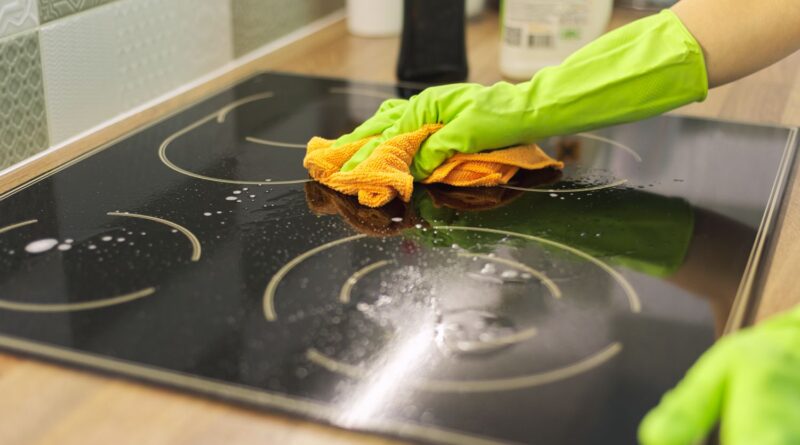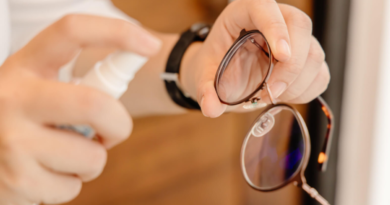How to Clean Glass Stove Top
How to Clean Glass Stove Top
Maintaining a pristine glass stove top elevates your kitchen’s aesthetic appeal and contributes to its durability. This guide offers comprehensive instructions and advice for effectively cleaning a glass stove top, along with preventative strategies to avoid damage and common pitfalls.
Understanding Your Glass Stove Top
Glass stove tops, which encompass smooth ceramic and induction cooktops, are celebrated for their contemporary and sophisticated look. Nevertheless, they are susceptible to staining, burnt food residues, and grease accumulation. Familiarizing yourself with the specific type of glass stove top you possess will assist you in selecting the most suitable cleaning techniques.
Types of Glass Stove Tops:
Smooth Ceramic: Frequently seen in electric stoves, these surfaces are heat-resistant but if not properly maintained, may develop scratches.
Induction cooktops: They heat pots and pans directly through the use of electromagnetic energy. Even though the glass surface doesn’t get very hot, it still needs to be cleaned frequently to stay functional and presentable.
Essential Safety Precautions
Before diving into cleaning, always ensure safety:
Cool Down: Make sure the stove top is completely cool before starting to avoid burns.
Turn Off Burners: Ensure that every burner is completely off and cool to the touch.
Cookware removal: To make room, remove any pots, pans or other items from the hob.
What You’ll Need
For effective cleaning, gather the following items:
Microfiber Cloth: Prevents scratches on glass by being soft and gentle.
Gently Dish Soap: Aids in the removal of oil and filth.
White vinegar: Removes oil and gives a smooth finish.
Baking soda: An effective mild abrasive for stubborn stains.
Optional razor blade scraper: Use sparingly to prevent scratches on obstinate residue.
Step-by-Step Cleaning Instructions
1. Remove Loose Debris
Using a soft brush or cloth, begin by removing any food particles or crumbs. This will shield surfaces from scratches as they are being cleaned.
2. Apply a Cleaning Solution
Regarding General Cleaning: Wet a microfiber cloth with a tiny quantity of dish soap mixed with warm water. Use gentle circular strokes to wipe the hob.
For Unlikely Stains: Mix water and baking soda to form a paste. After applying this paste to the soiled areas, give it ten minutes or so to sit.
3. Wipe Down the Surface
To remove the soap or baking soda paste, use a moist cloth. To prevent streaks, make sure all remnants are gone.
4. Dry the Surface
Use a clean, dry microfiber cloth to thoroughly dry the stove top. Water stains and streaks are less likely as a result.
Removing Persistent Stains
If you encounter tough stains:
Apply Baking Soda Paste: After applying the paste to the stain, allow it to sit for 10-15 minutes
Gently Scrub: Scrub the area gently with a soft cloth or sponge.
Use a Razor Blade Scraper: Gently scrape away particularly persistent stains with a razor blade scraper held at a 45-degree angle. Make sure you apply just enough pressure so as not to scratch the glass.
Maintenance Tips
Regular maintenance will keep your stove top in excellent condition:
Daily Wipe-Downs: To avoid accumulation, wipe off the hob after every usage. Use Stove Protectors To prevent spills and crumbs, think about utilising guards or liners.
Check for Damage: Check the surface frequently for dings or other damage, and take quick action to fix any problems.
Alternative Cleaning Methods
For people who favour using natural cleaning products:
Water and Vinegar: Fill a spray bottle with equal parts water and vinegar. The glass surface is cleaned and polished by this mixture.
Lemon Juice: Lemon juice has a fresh fragrance and helps cut through grease.
Common Mistakes to Avoid
Avoid these common pitfalls to ensure a clean and undamaged stove top:
Harsh Chemicals: Avoid using strong chemicals or abrasive cleaners as they may cause harm to the glass.
Metal Scrubbers: Steer clear of metal scrubbers or utensils that might cause surface scratches.
Inadequate Drying: To avoid streaks, make sure the hob dries completely after cleaning.
Troubleshooting
If you experience persistent cleaning issues:
Review Methods: Review your cleaning techniques and make any required adjustments.
Seek Expert Assistance: If there are severe stains or a lot of damage, you might think about hiring a professional for cleaning services or guidance.
Professional Cleaning Services
In the event of difficult stains or substantial damage, expert assistance may be required. Professionals can fix your glass stove top back to its original state with specific tools and methods.
Additional Tips and Tricks
Regular Routine: Create a cleaning schedule to keep your stove top looking and working well.
Preventive actions: To minimise cleaning time and collect spills, use stove guards.
Swift Reaction: Spills should be cleaned up right away to avoid developing stains that are difficult to remove.
Pros and Cons of Glass Stove Tops
Pros:
A sleek, contemporary appearance improves kitchen design.
Simple to clean using the right techniques.
resistant against corrosion and rust.
Smooth surface offers a hygienic cooking environment.
Cons:
calls for particular cleaning methods and supplies.
Fingerprints and smudges that are visible may require regular cleaning.
Compared to conventional stovetops, repairs or replacements may be more expensive.
Preventative Maintenance
To keep your glass stove top in optimal condition:
Choose Proper Cookware: To prevent scratches, use cookware with flat bottoms.
Cleanup Spills Immediately: To avoid hardening, clean up spills as soon as possible.
Lift, Don’t Drag: Always lift cookware to prevent scratches.
Regular Cleaning: Create a cleaning routine and follow it
Regular Inspection: Look for and take care of any damage indicators on a regular basis.
Conclusion
Keeping your glass stove top clean will not only keep your kitchen looking fantastic but also guarantee that it will continue to function properly over time. You can have a clean and effective cooking surface for many years to come if you follow the instructions in this article and establish a regular cleaning schedule. For the greatest results, put safety first, choose the appropriate cleaning techniques, and take quick action to remove stains.




